We are committed to giving each of our pupils a broad curriculum, allowing a large scope of learning and opportuinites.
“You can’t use up creativity. The more you use, the more you have.” - Maya Angelou
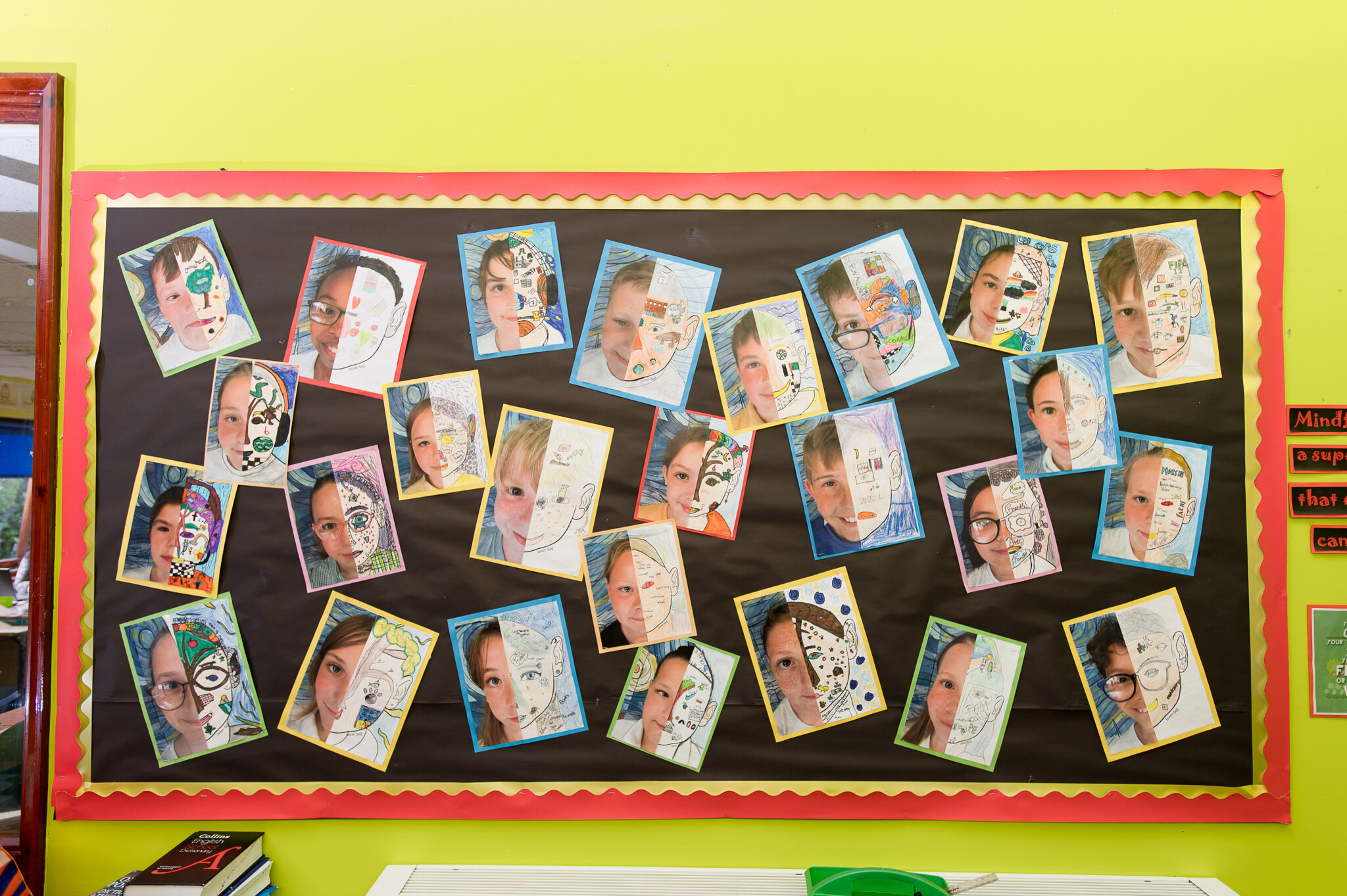
In our Art and Design curriculum at St. Peter’s, we value each child’s wonderful imagination and their own individuality. We aim to give all children the opportunity to express themselves and be creative through inspiring and stimulating lessons and activities. We ensure that the children are able to explore, observe, invent and develop their creative thinking. In order to do this, we give the children access to a wide range of materials, media, processes and techniques to help them develop these skills.
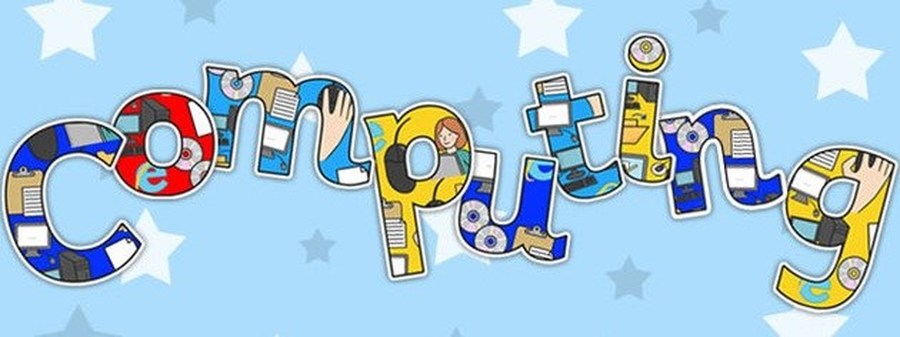
At St Peter’s, we understand the importance of high-quality computing education that equips our pupils with the skills needed to become digitally literate.
Computational thinking is key to ensuring that all pupils are able to participate effectively and safely in the digital world. High quality computing education paves the pathway to a world of innovation and creativity, with deep links in mathematics, science, design and technology, and much more.
We use the Teach Computing scheme to ensure coverage of the 2014 National Curriculum for Key Stages 1 and 2.
Our extensive coverage means that all pupils will have access to a wide range of computing hardware and software that will equip them with the skills needed to construct computer programs, 3D drawings, presentations, develop games, animations, short films and publish documents using a printer.
The importance of online safety is emphasised each year with lessons on safe searching, understanding social media (how to keep your information safe), using reputable sources and the benefits of disconnecting. Parent workshops are provided to help us create an environment where pupils are educated and able to make informed decisions with the support and guidance of those who care for them.
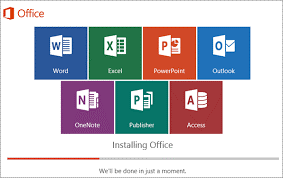
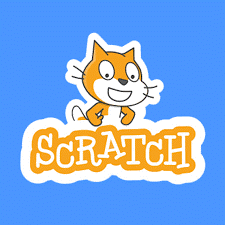
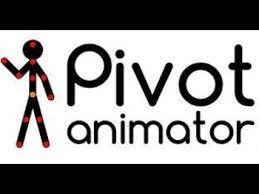


Design and Technology
At St Peter’s, we understand the importance of active learning and aspire to provide an environment enriched with practical learning opportunities. As Benjamin Franklin famously said, “Tell me and I forget, teach me and I may remember, involve me and I learn.” We know that pupils learn best when they are free to explore and test their ideas in a safe and stimulating environment. Subsequently, our curriculum is enriched with a wide range of opportunities that encourage creativity and innovation throughout the classroom.
Through active enquiry, each pupil will develop a wealth of knowledge as they learn about famous artists and inventors, explore historical architecture, discover different embroidery techniques and more. Each pupil will design, make and evaluate a product each term as they explore their ideas, work with their peers and develop their understanding.
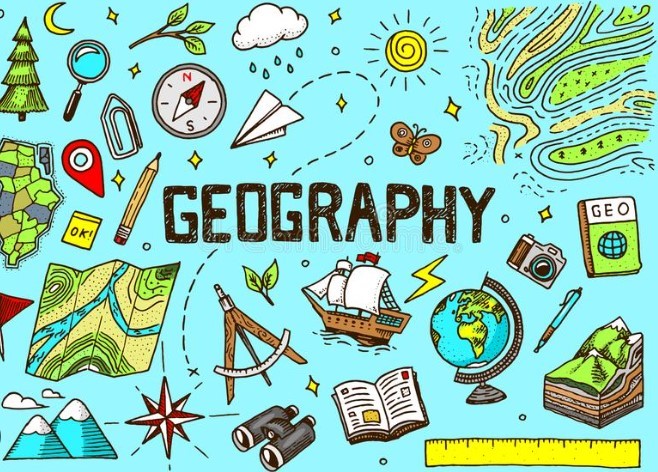
“The study of geography is more than just memorizing places on a map. It’s about understanding the complexities of our world.” Barak Obama


Through teaching Geography at St Peter’s, we intend to inspire pupils with a curiosity and fascination about the world and its people that will remain with them for the rest of their lives.
We believe that teaching should equip pupils with knowledge about diverse places, people, resources and both natural and human environments, together with an understanding of the Earth’s key physical and human processes.
We want our children to gain confidence and practical experiences of geographical knowledge, understanding and skills that explain how the earth is interconnected and changes over time. At St Peter’s we strive to highlight positive contributions that our pupils could make as informed global citizens.

History
The aim of history teaching at St. Peter’s Primary School is to stimulate the children’s interest and understanding about the life of people who lived in the past. We teach children a sense of chronology, and through this they develop a sense of identity and a cultural understanding based on their historical heritage. Therefore, they learn to value their own and other people’s cultures in modern multicultural Britain and, by considering how people lived in the past, they are better able to make their own life choices today. We teach children to understand how events in the past have influenced our lives today; we also teach them to investigate these past events and, by so doing, to develop the skills of enquiry, analysis, interpretation and problem solving. The development of children’s historical knowledge and understanding and skills is closely linked to their development of their ability to use language. To make our curriculum personal to our learners we focus on three chosen threads: Monarchy, Everyday Lives and Local Links which progress through the year groups as new periods are covered.
Useful History Websites
https://www.bbc.co.uk/teach/ks1-history/z6h3jhv
https://www.bbc.co.uk/teach/ks2-history/zfbwhbk
The 2014 National Curriculum for Maths aims to ensure that all children:
- Become fluent in the fundamentals of Mathematics
- Are able to reason mathematically
- Can solve problems by applying their Mathematics
At St. Peter’s Primary School, all of these skills are embedded within Maths lessons and are developed consistently over time. We are committed to developing our children’s curiosity about the subject, to recognise the importance of Maths in the wider world and that they are able to use their mathematical skills and knowledge confidently in their lives in a range of different contexts. We want all children to enjoy Mathematics and to experience success in the subject, with the ability to reason mathematically and problem solve. As a result, our maths curriculum is designed to meet the needs of our children; objectives are broken down into smaller, key learning points and include a range of concrete, pictorial and abstract approaches. Links across other mathematical topics and subjects are established, allowing pupils to apply their new skills.
Scheme of Work
St. Peter’s Primary School follows a scheme of work called White Rose Maths, which is designed to enable children to develop a mastery of mathematics. In this scheme, National Curriculum objectives are grouped together into units of learning. Each unit focuses on a small number of key learning points. Teachers then develop these key learning points and plan lessons which involve fluency, reasoning and problem solving activities
Modern Foreign Languages (MFL)
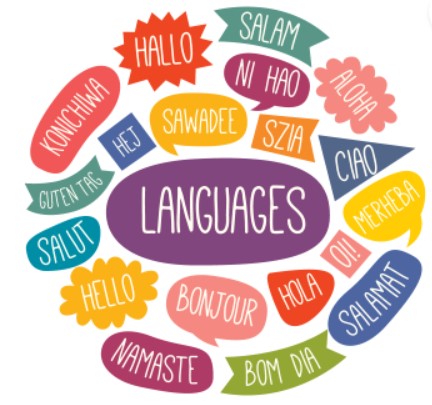
St. Peter’s Primary School’s aim is that all pupils will develop a genuine interest and positive curiosity about foreign languages, predominantly Spanish.
Learning a second language will offer pupils the opportunity to explore relationships between language and identity, develop a deeper understanding of other cultures and the world around them with a better awareness of self, key individuals and cultural differences. The intention is that pupils will feel able and encouraged to continue studying languages beyond key stage 2 and ultimately be working towards becoming life-long language learners.
The four key language learning skills (listening, speaking, reading and writing) will be taught in an age-appropriate way across key stage 2. This will enable pupils to use and apply their learning in a variety of contexts, laying down solid foundations for future language learning.
In key stage one, teachers are encouraged to teach ‘incidental Spanish’ through singing and simple vocabulary.
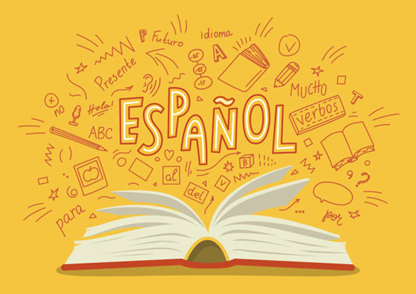
The National Curriculum for languages aims to ensure that all pupils:
Understand and respond to spoken and written language from a variety of authentic sources
Speak with increasing confidence, fluency and spontaneity, finding ways of communicating what they want to say, including through discussion and asking questions, and continually improving the accuracy of their pronunciation and intonation
Can write at varying length, for different purposes and audiences, using the variety of grammatical structures that they have learnt
Discover and develop an appreciation of a range of writing in the language studied
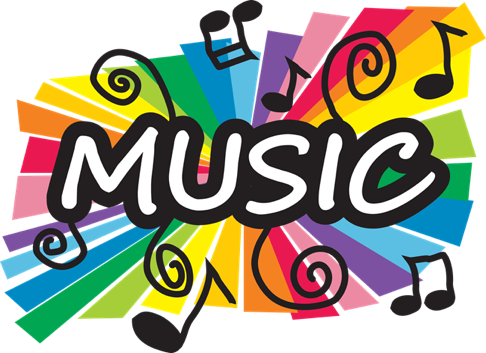 At St. Peter’s Primary School our aim is to develop a love and appreciation of music where pupils have the confidence, knowledge and skills to experiment with composition and performance. Music plays a big part in the life of our school and can be heard in all classes. We aim to help children to understand the value and importance of music in the wider community and to ensure that they are able to use their musical skills, knowledge and experiences to involve themselves in music in a variety of contexts.
At St. Peter’s Primary School our aim is to develop a love and appreciation of music where pupils have the confidence, knowledge and skills to experiment with composition and performance. Music plays a big part in the life of our school and can be heard in all classes. We aim to help children to understand the value and importance of music in the wider community and to ensure that they are able to use their musical skills, knowledge and experiences to involve themselves in music in a variety of contexts.
Physical Education
Our aim at St Peters is to inspire our children to create a lifelong love for an active lifestyle and personal desire to achieve.
Our physical education curriculum ensures that our children are able to develop holistically through sporting values such as; determination, perseverance, resilience and loyalty. Creating an environment that is fully inclusive is at the forefront of our physical education lessons, where every child can achieve.
During our lessons we teach and demonstrate good sportsmanship. Developing characteristics such as respect and honesty will help our children to communicate well with others and make a positive contribution to society.
In PE pupils develop their skills through Dance, Gymnastics, Outdoor Adventure activities, Athletics, Swimming and Games. Various different team sports are taught throughout the game’s module over the year, including Netball, Hockey, Tag Rugby, Cricket and Rounders. Our children have the opportunity to compete in some of the sports on offer against other County schools.
OAA team work and leadership
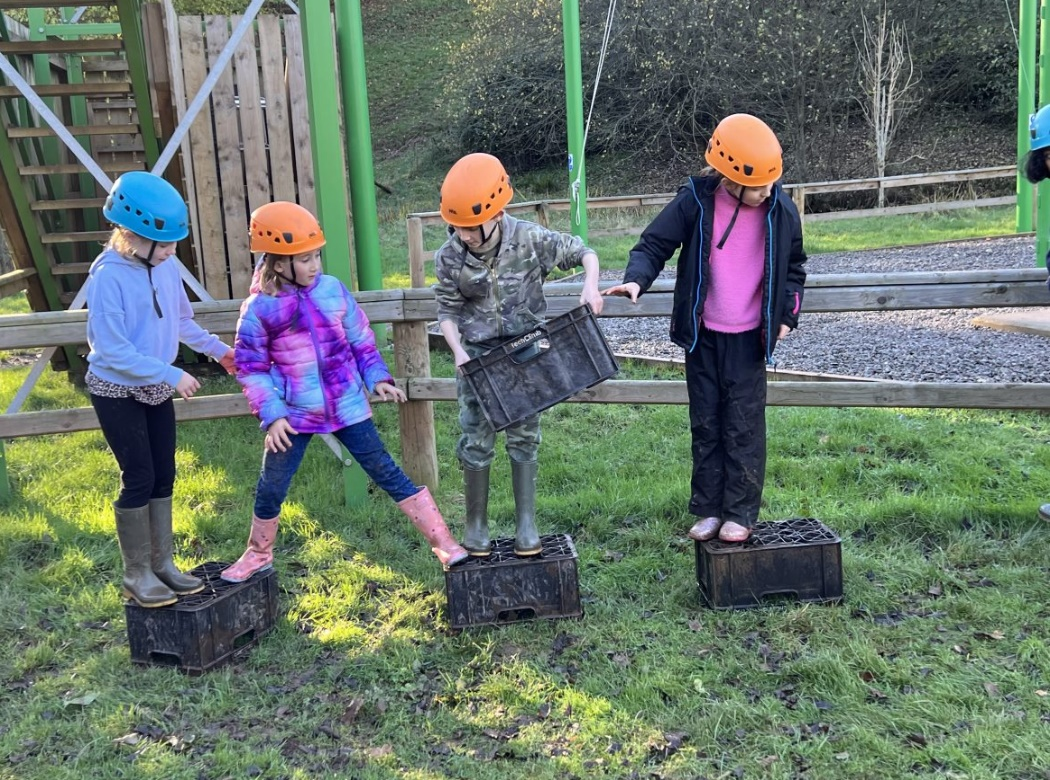
Extra curricular clubs are on offer to all children throughout the week covering a wider range of activities. Our Lego and cooking clubs are a great success.
Each year group has the opportunity to experience forest school over a course of 6 weeks. Our children have hands on experiences in a natural setting on site, which develop confidence and self-esteem through exploration and supported risk taking.
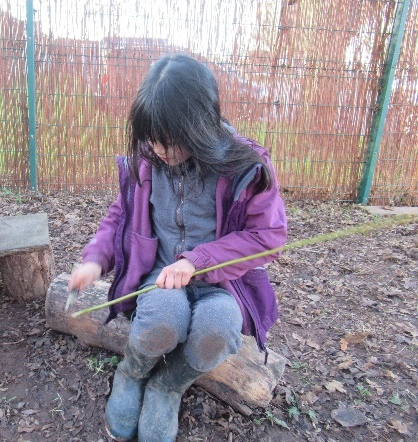
PE kit: All children (with the exception of year 6) are expected to come in to school in their PE kit on their timetabled day. Appropriate wear for PE lessons is essential to ensure your child’s safety and is also part of St Peters Primary Schools home school agreement. Our school PE kit consists of:
- Plain white tshirt
- Bottom layers need to be black in the form of tracksuit/joggers or leggings or in the hotter weather shorts or skort.
- Pumps or Trainers for indoor use
- Outdoor Trainers suitable for use on the school field or playground
For health and safety long hair needs to be tied back and all jewellery removed, including stud earrings, watches and fitness trackers.
Personal, Social, Health and Economic (PSHE) education
At St. Peter's Primary School we:
• Implement democracy through our school Parliament.
• Implement the rule of law by understanding that every action has consequences, either positive, negative or both.
• Celebrate Individual liberty by providing opportunities for children to make choices and therefore gain independence within their thinking.
• Promote mutual respect by following school rules and having good manners.
• Understand and promote tolerance through learning about different cultures and celebrating people's similarities as well as differences.
PSHE is at the core of our school and is woven into all that we do. Our pupils are given opportunities in PSHE lessons and assemblies to develop confidence, self-motivation and an understanding of their rights and responsibilities within our diverse society. Our comprehensive PSHE curriculum, which includes statutory Relationships, Sex and Health Education.
Relationships, Health and Sex Education (RSHE)
Relationships, Health and Sex Education (RSHE)
In September 2020 Relationships Education became compulsory in all primary schools in England. Health Education (of which puberty education is a key part) is also compulsory.
We teach PSHE, including statutory Relationships and Health Education, in a variety of ways: as a discrete subject using TWINKL Online resources, via assemblies and through other subjects when there is the opportunity for cross-curricular learning.
At St. Peter's, Sex Education is taught in Upper Key Stage 2 following the age-appropriate outline by TWINKL, with School Nurses coming in to support delivery . Reproduction is taught as part of the Science National Curriculum.


At St Peter's Primary school, we follow the British Values which support children’s spiritual, social, moral and cultural development. Through the teaching of Religious Education, we are nurturing these by enriching children’s knowledge of world views and religions.
We follow the Herefordshire agreed Religious Education syllabus 2025 - 2030, which asserts the importance and value of religious education (RE) for all pupils, with on-going benefits for an open, articulate and understanding society.
Assemblies are held each week, as part of our collective worship provision to promote pupils’ spiritual, moral and cultural development. The school has close links with our local churches, who visit the school to deliver assemblies and assist with curriculum delivery.
Whilst we value the importance of teaching religious education, we also recognise that some families wish for their children to be excluded from learning. If this is the case, please contact Heather Yarnold, Head of School.

Reading is at the heart of everything we do.
The skill of reading is vitally important, and will have a direct influence on all areas of the curriculum.
At St. Peter’s, our aim is to encourage our pupils to have a love for reading.
We want to foster a love of reading, where children can not only demonstrate an understanding of what they have read, but also show enthusiasm and excitement for it. Children are offered a wide range of reading materials, from their own class reading areas, topic books that are displayed around the classroom, or our brand new school library.
Children begin with reading books matched to their phonetic ability through Read Write Inc. Phonics in Reception Y1 and Y2, before moving onto the Accelerated Reader scheme. We ask parents to support their child with reading, by encouraging them to regularly hear their child read and promote the love of books. We reward children that work hard with their reading by awarding weekly ‘Reading Champion’ certificates and half termly visits to our book vending machine.
https://www.renlearn.co.uk/accelerated-reader/
Reading

Through teaching Science at St. Peter’s, we intend to develop a sense of excitement and curiosity about natural phenomena.
A high-quality science education provides the foundations for understanding the world. Children should be encouraged to understand how science can be used to explain what is occurring, predict how things will behave, and analyse causes.
Through weekly lessons our aim is for all children to:
- develop scientific knowledge and conceptual understanding through these units: Life Processes and Living Things, Materials and their Properties and Physical Processes
- develop understanding of the nature, processes and methods of science through different types of science enquiries that help them to answer scientific questions about the world around them
- be equipped with the scientific knowledge required to understand the uses and implications of science, today and for the future.
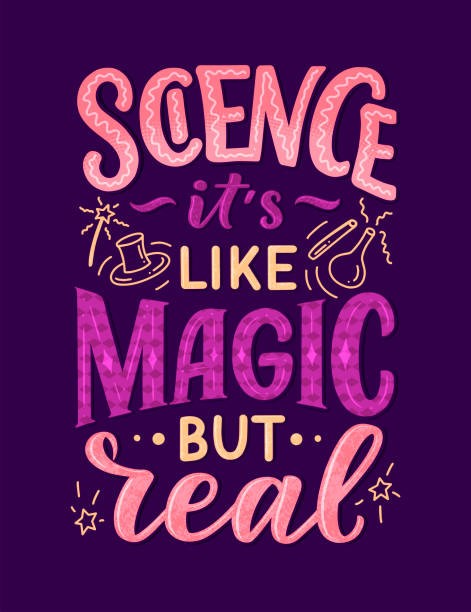
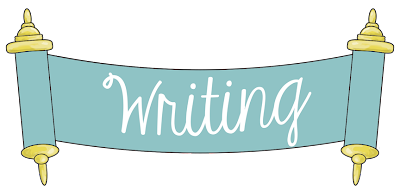
The skills of reading, writing, and speaking and listening are vitally important and will have a direct influence on all areas of the curriculum.
Our aim is to encourage our pupils to have a love for reading and writing and have a good understanding of vocabulary in the written and spoken format.
At St. Peter’s Primary School writing is taught through The Write Stuff writing scheme.
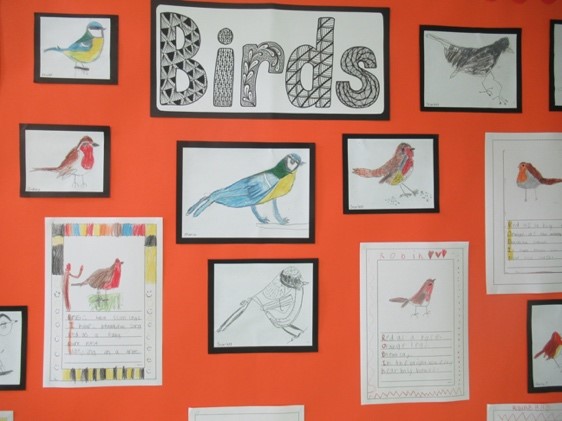
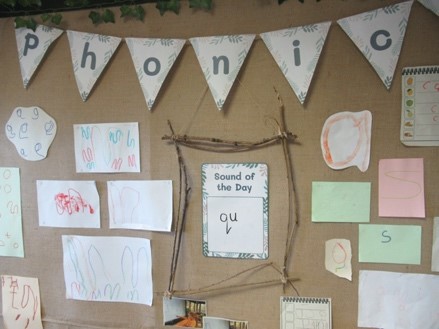
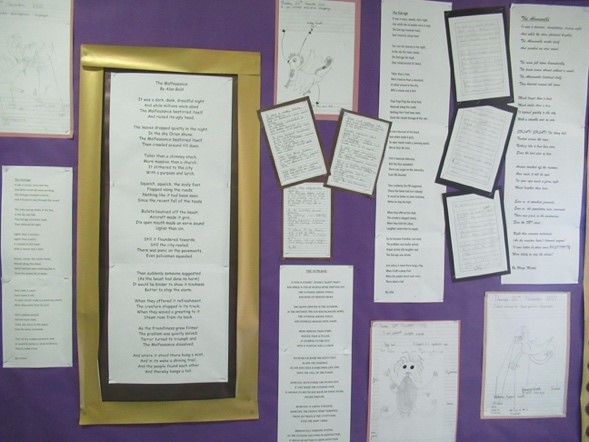
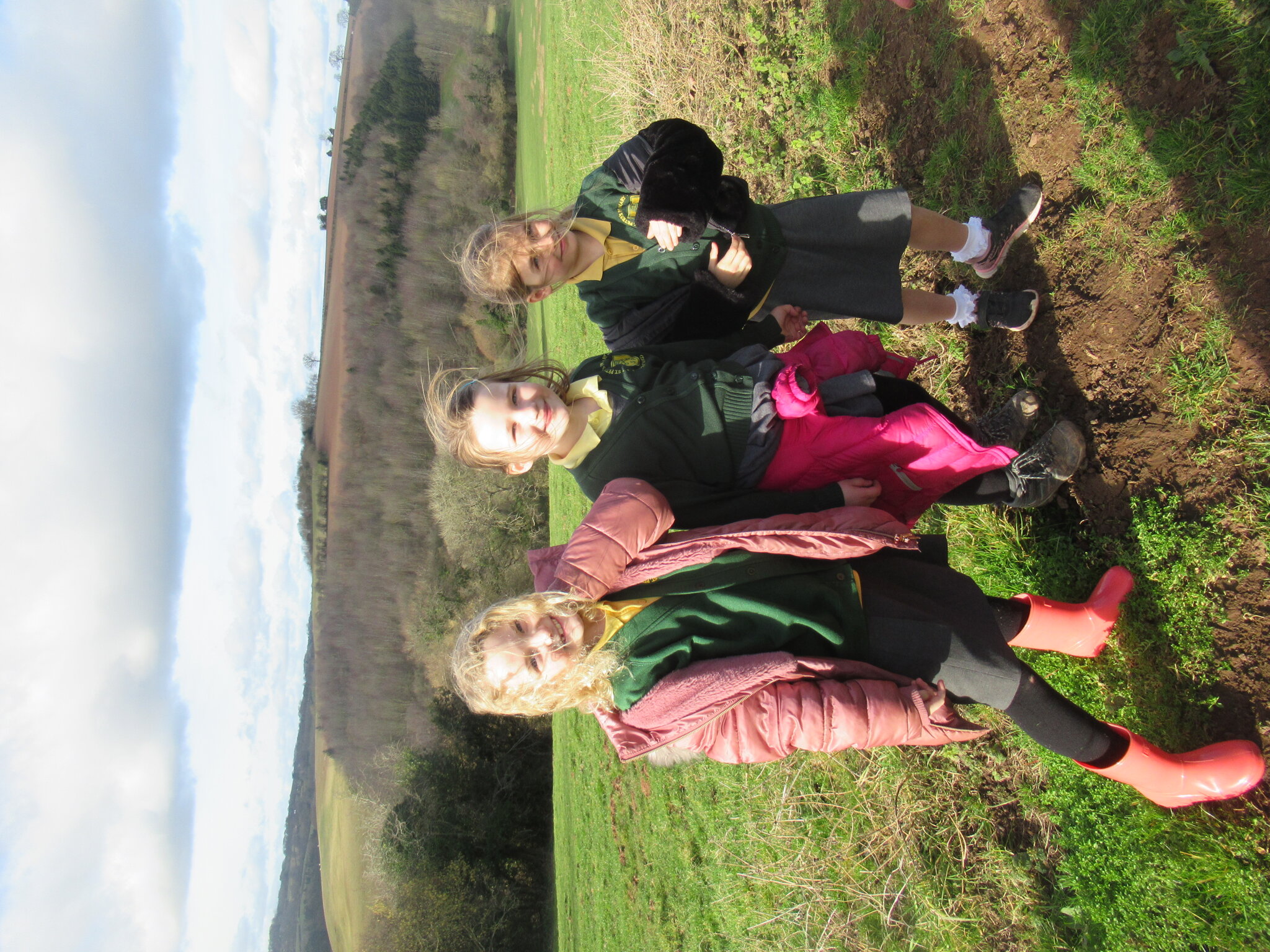
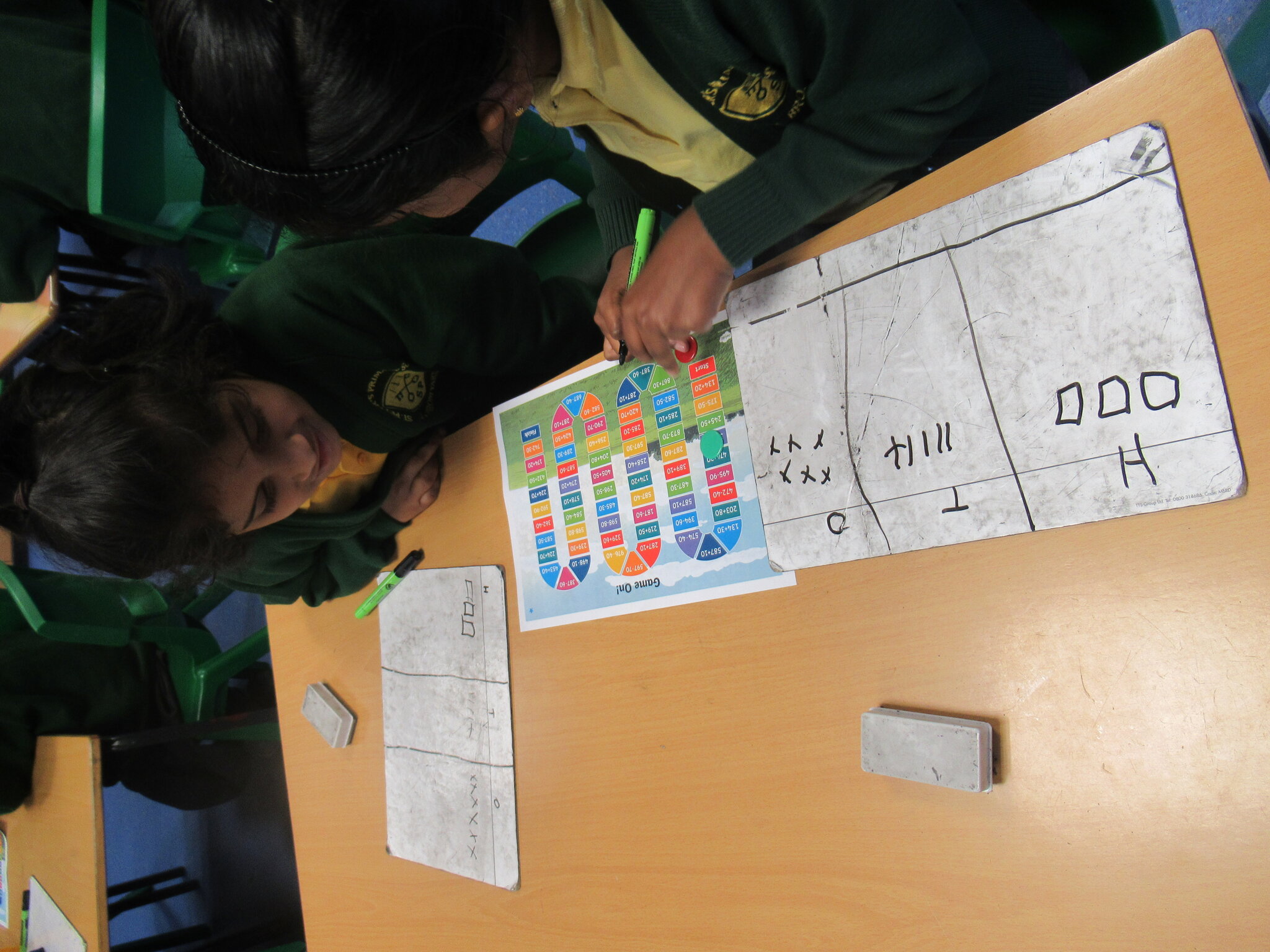
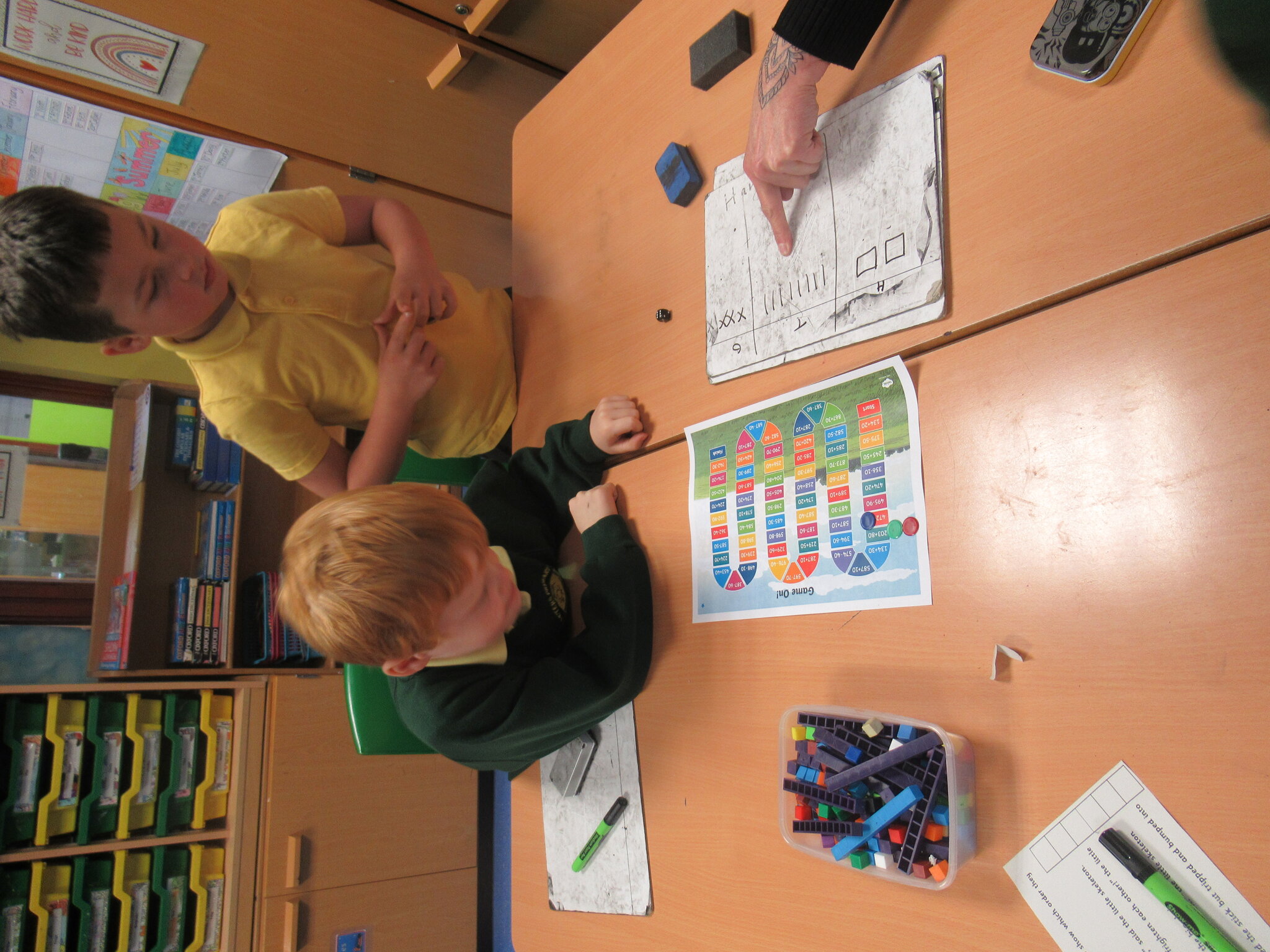
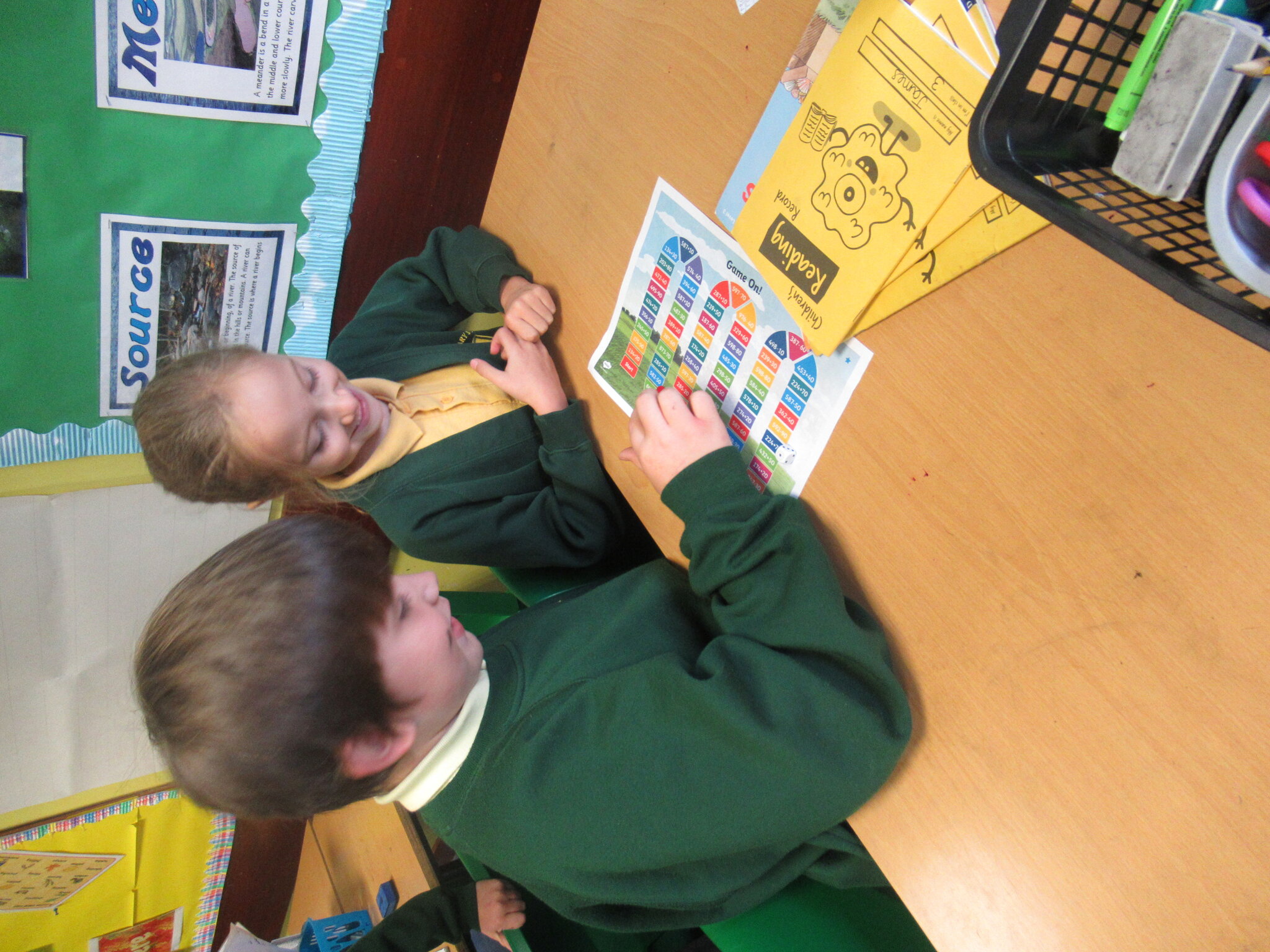
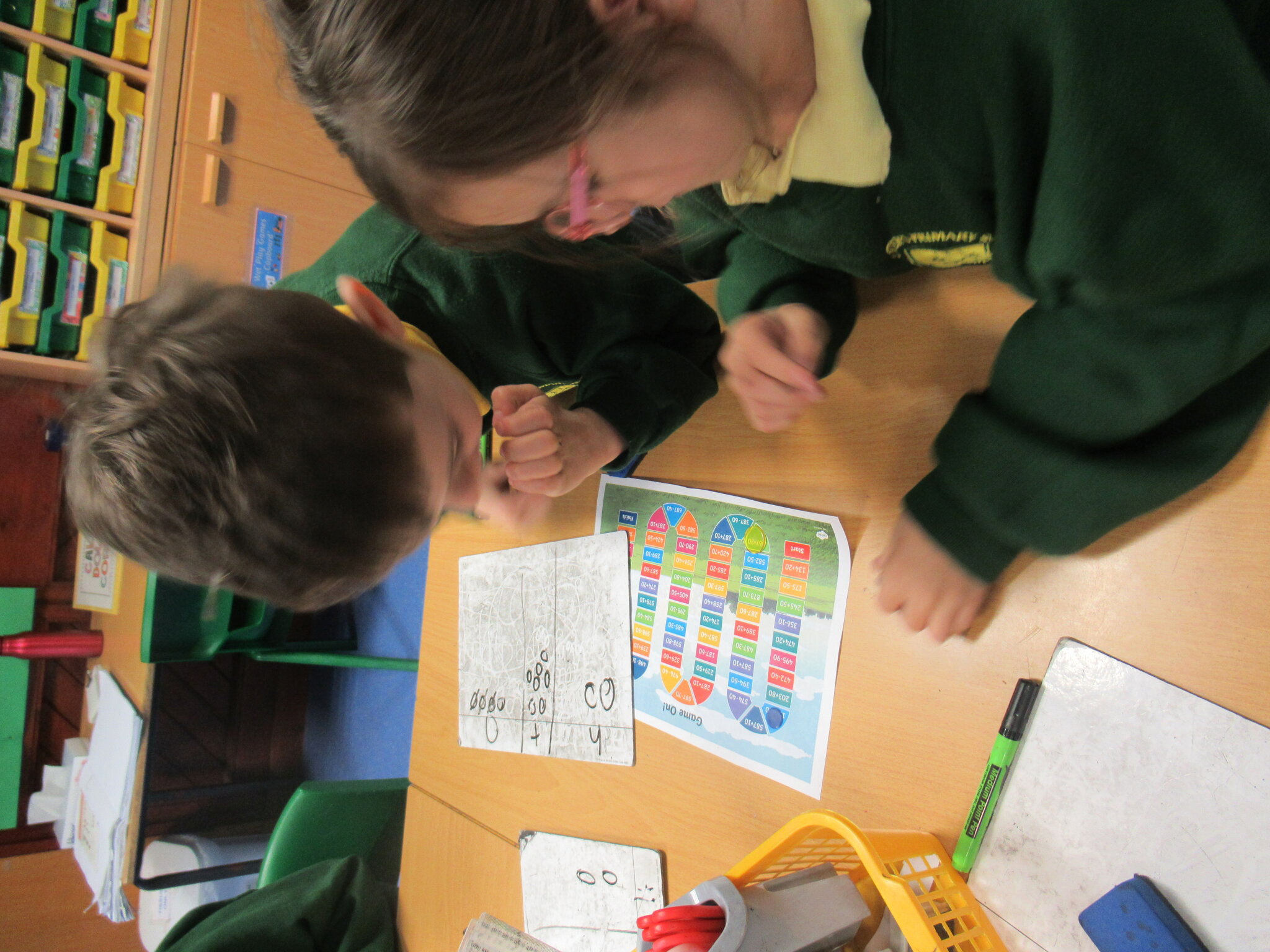
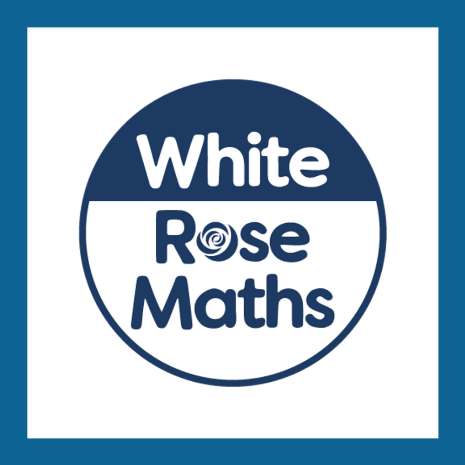
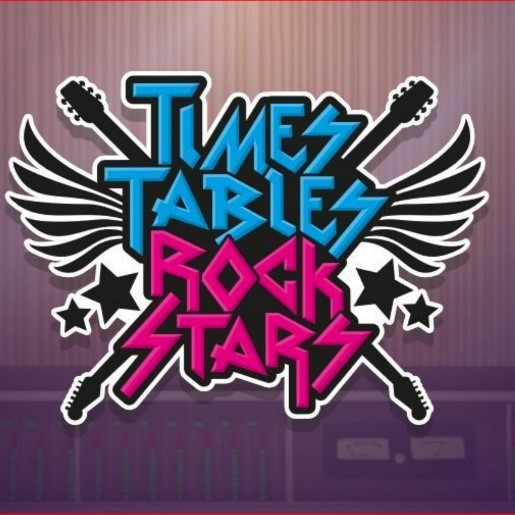
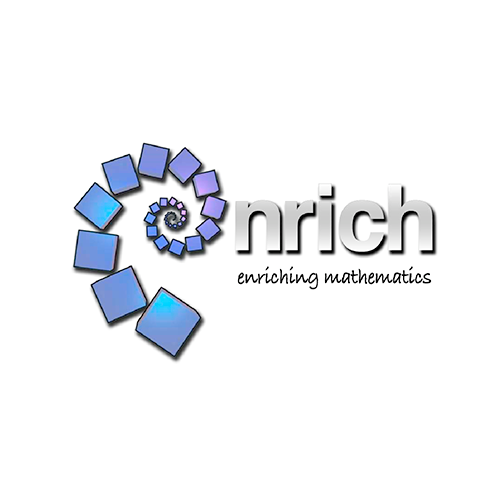


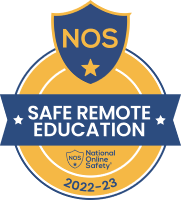
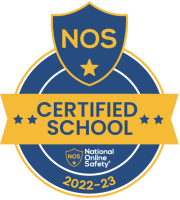
.png)
